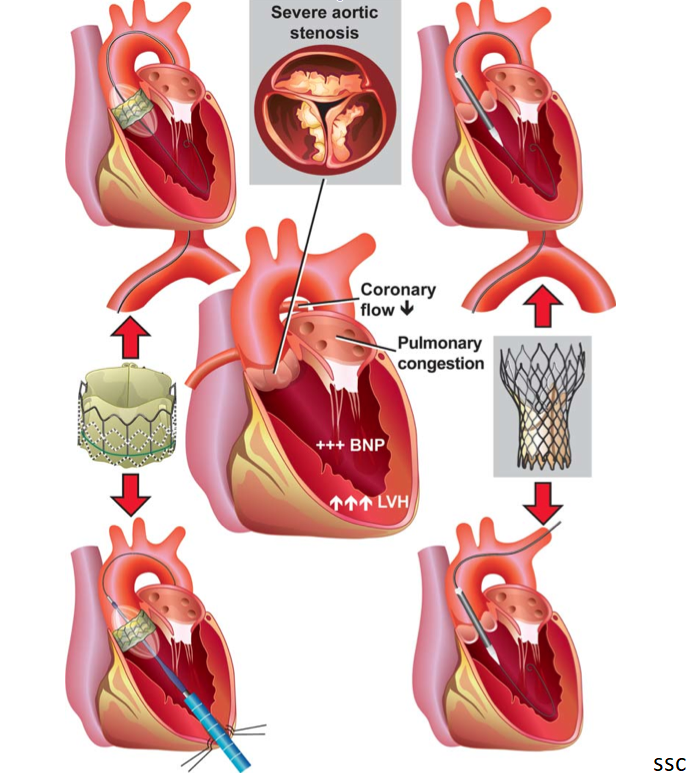
Transcatheter Aortic Valve Implantation
Transcatheter aortic valve implantation (TAVI), also referred to as transcatheter aortic valve replacement (TAVR), is a procedure that replaces your diseased aortic valve with a man-made valve. The TAVI procedure has been recommended to you as an alternative to open heart surgery. The old heart valve is not removed but acts like an anchor for the new heart valve. This procedure is done through small cuts (incisions) using a long, thin tube (catheter), X-rays, and ultrasound.
The aortic valve controls blood flow from the left ventricle of your heart to the rest of your body. The valve can become scarred and stiff and doesn't open correctly. This condition is called aortic stenosis. The means the left ventricle of the heart has to work harder to push the blood through the valve. Your heart may have to work too hard to pump blood through this small valve opening to the rest of your body. In some cases, this extra work will make the muscle of the ventricle thicken. In time, the extra work can tire the heart and cause the heart muscle to weaken. This may lead to increasing heart failure.
TAVI is used in certain conditions. During the procedure, doctor inserts a catheter through a blood vessel in your leg to deliver and implant the artificial valve into your heart. Sometimes, the catheter is placed through a small incision in your chest underneath the collarbone. Or it is put through an incision between the ribs. The new valve helps improve blood flow from your heart to the rest of your body
You may need TAVI if you have progressive heart failure from aortic stenosis, but aren’t a good candidate for a traditional open-heart aortic valve replacement surgery. Conditions that would make open-heart surgery dangerous for you include:
As more surgeons and surgical centers get more experience with TAVI, the risks are decreasing. However, TAVI is still a major procedure that often requires general anesthesia (medicine that puts you to sleep and prevents you from feeling pain). Any general anesthesia includes risks for heart or brain injury.
The most common risks associated with TAVI include:
There may be other risks, depending on your specific medical condition. Be sure to discuss any concerns with your doctor before the procedure.
Before the procedure , your heart valve team will evaluate your overall health. This may include X-rays, CT scans, blood tests, and other tests to check the health of your lungs and heart. Your medical team will also give you an echocardiogram to evaluate your aortic valve. This test uses sound waves to create images of your heart. Your medical team may also do a cardiac catheterization to evaluate your heart. You will also need to:
Methods may vary, depending on your condition and your doctor's practices. Talk with your doctor about what to expect. Generally, a TAVI procedure follows this process:
You will be moved to the intensive care area of the hospital, so you can be monitored closely while you recover from the procedure. As you recover, the tubes in your veins and arteries that give you nourishment and monitor your heart functions will be removed. You will soon be able to get up and walk and return to a normal diet. You may need to stay in the hospital for several days.
After your doctors feel you have recovered enough to go home, follow all instructions for medicines, pain control, diet, activity, and wound care. Make sure to keep all your follow-up appointments.
Complete recovery may take several weeks. Here are some helpful guidelines to follow as you heal: